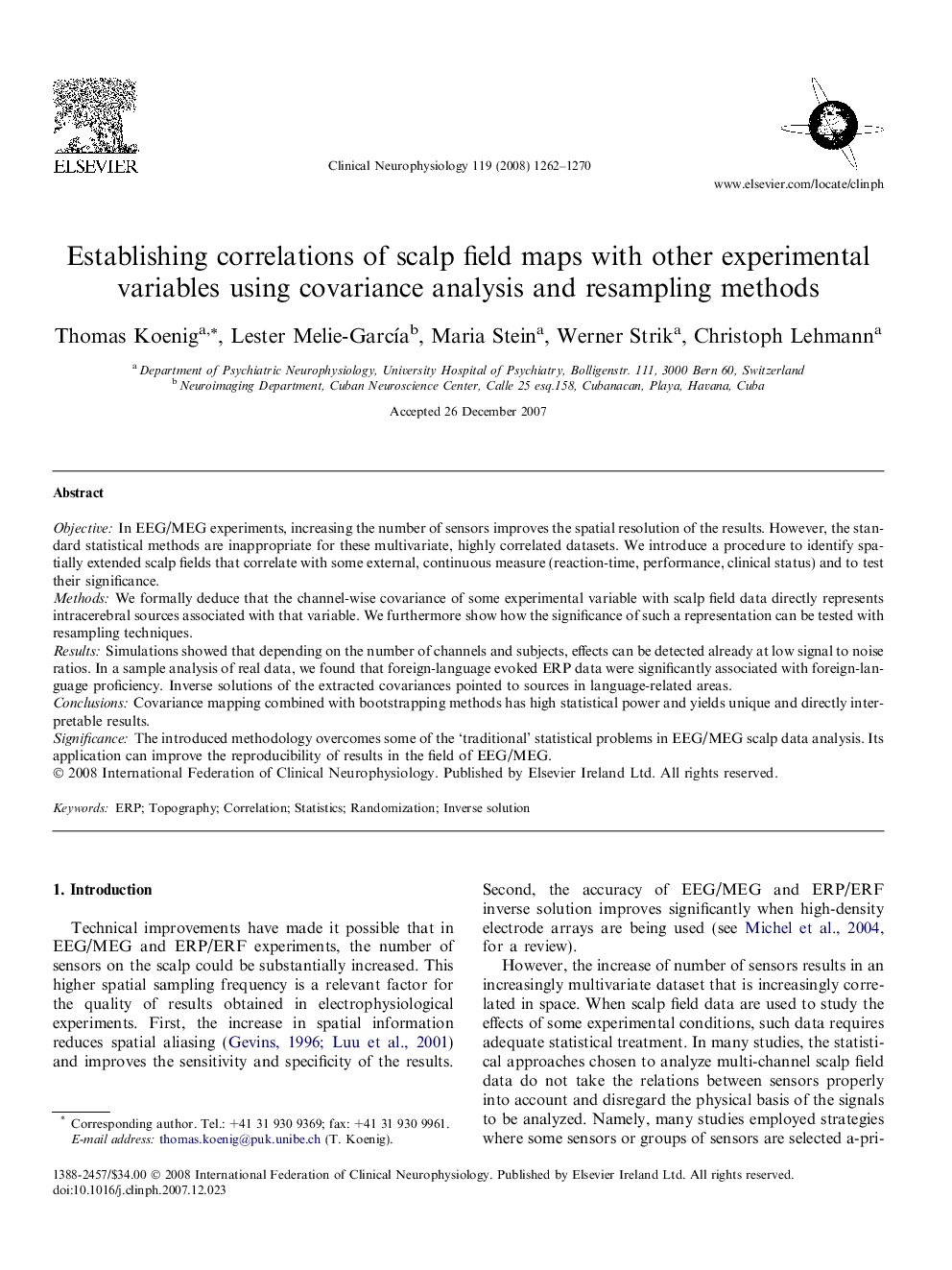| کد مقاله | کد نشریه | سال انتشار | مقاله انگلیسی | نسخه تمام متن |
|---|---|---|---|---|
| 3047444 | 1185057 | 2008 | 9 صفحه PDF | دانلود رایگان |

ObjectiveIn EEG/MEG experiments, increasing the number of sensors improves the spatial resolution of the results. However, the standard statistical methods are inappropriate for these multivariate, highly correlated datasets. We introduce a procedure to identify spatially extended scalp fields that correlate with some external, continuous measure (reaction-time, performance, clinical status) and to test their significance.MethodsWe formally deduce that the channel-wise covariance of some experimental variable with scalp field data directly represents intracerebral sources associated with that variable. We furthermore show how the significance of such a representation can be tested with resampling techniques.ResultsSimulations showed that depending on the number of channels and subjects, effects can be detected already at low signal to noise ratios. In a sample analysis of real data, we found that foreign-language evoked ERP data were significantly associated with foreign-language proficiency. Inverse solutions of the extracted covariances pointed to sources in language-related areas.ConclusionsCovariance mapping combined with bootstrapping methods has high statistical power and yields unique and directly interpretable results.SignificanceThe introduced methodology overcomes some of the ‘traditional’ statistical problems in EEG/MEG scalp data analysis. Its application can improve the reproducibility of results in the field of EEG/MEG.
Journal: Clinical Neurophysiology - Volume 119, Issue 6, June 2008, Pages 1262–1270